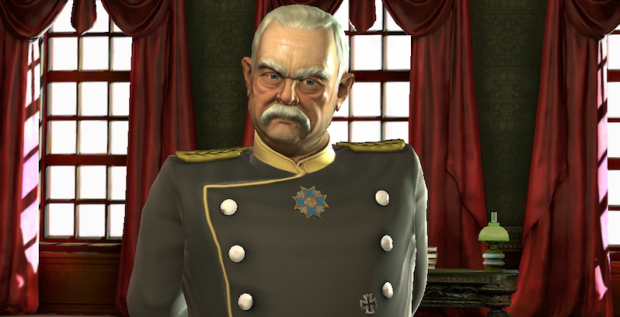I’m a big “fan” of the Civilization series. I can’t use the word “fan” without massive quotation marks because while I absolutely love playing it and can fall prey to that wonderful “just one more turn” addiction that plagues so many Civ vets, I am completely f*cking awful at Civilization games. If I win, it’s either by pure luck (some guy who was about to finish his spaceship gets invaded by another dude, allowing me to finish mine first) or because I’m playing on the easiest difficulty level.
I’m not really sure whether that made me more or less excited to see Civilization V than a true die-hard player might be. On the one hand, Civ V‘s significant changes to the series’ combat system have gotten me really excited, because combat was always my weakest area. On the other hand, I’m not sure if a die-hard Civvie would, or should, cry foul at the move from a tile-based map to a hex-based one, or the fact that you can no longer stack infinite troops on a single spot.
Either way, I couldn’t help but leave 2K’s eyes-on preview itching to get my hands on Civ V.
Hit the jump for a rundown of what I saw.
You can now only fit one unit on each tile (or hex, rather). This is the exact sort of thing that would probably mean nothing to you if you’re not a Civ fan, but to anyone who has ever gone through the tedious process of fighting a single tile full of eight different combat units can tell you, this is a significant change. In previous Civ games, you almost never had any reason to move your combat units away from your cities; since you could garrison as many troops as you wanted on as many tiles as you wanted, almost all city-siege combat ended up feeling more or less the same.
In Civ V, it would seem, you now have more of a reason to spread your units out and strategically consider their placement. Since ranged combat troops can now attack units more than one tile away, you now actually have to think about not just how powerful your units are versus other units, or how many of them you have, but where they are in relationship to the sort of enemy you’re facing. From what I could glean from the demo, it seemed like a much more elegant combat system along the lines of Advance Wars.
Speaking of elegance, Civ V seems to have combined all the functionality of Civ IV and wrapped it in Civilization Revolution‘s satisfyingly intuitive UI. No longer will you be forced to deal with events exactly as they occur; if you want to move your troops before picking a new technology to research, you’re free to do that. On the whole, the screen looked a lot less cluttered.
The final big change I was shown concerned the inclusion of city-states. As independent towns that will never grow any bigger and belong to no other country, city-states are like little, AI-controlled mini-allies that can be taken over by any of the competing civs. By helping out one city-state with its barbarian problem, for instance, your civ might be rewarded with a certain amount of gold per turn. Should that city-state be invaded by an enemy, however, you have to decide: is it worth defending your ally, or should you simply write off the bonus and leave it alone? The dude running the demo relayed a story wherein one of the devs went to go help his city-state fend off an attack from a rival civ, only to anger that rival civ into getting his allies to help him retake the city-state, at which point everyone started attacking everyone and a legitimate World War broke out — all over a tiny little city-state.
Brad covered the rest of the new features in his earlier post, but as a Civilization “fan,” the revamped combat and city-state mechanics are what really have me excited for Civilization V. Even if I still end up sucking at it.


